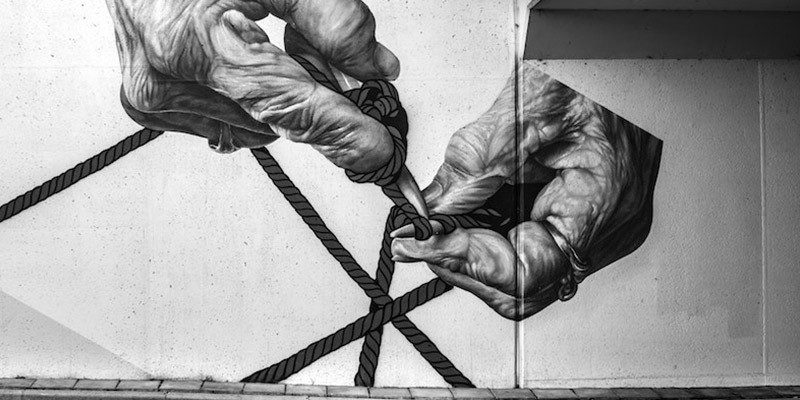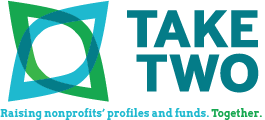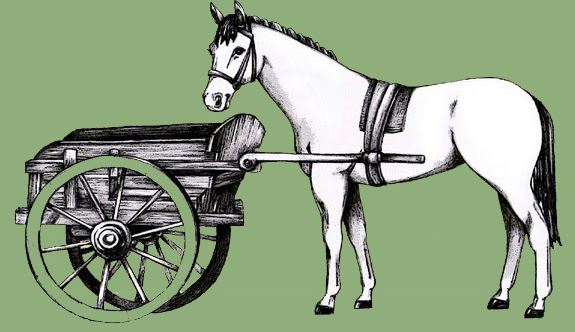
A New Way of Working from Two Old Hands
Eleven years ago we started TakeTwo in part because we wanted to work in a new way: with flexible schedules, and without a centralized office. We’ve learned a few things about how best to make this, ahem, work. Here are our tips – and some questions – to help your nonprofit navigate the new era of ‘working from home.’
- First things first: working from home isn’t simply taking the office home. It’s a way of working that requires a fresh approach and rules.
We started TakeTwo without much experience running a business. Within months we needed to clarify and codify some of our parameters for work: for e.g., since we worked in separate spaces, how could we best coordinate, and be consistent?
Most nonprofits closed their offices literally overnight, and some have had to re-open without clear guidelines on how to do so. Now is the time to reexamine and clarify your expectations for staff. When did you last examine your handbook? Perhaps it’s time to throw it out (or put it back in the drawer) and develop a short new set of guidelines. It ain’t 9-5. We wanted flexibility in our schedules but that didn’t mean working less — instead we needed to work when we could, sometimes at 10 PM or 5 AM instead of the typical 9-5. Now, as staff balance childcare, house work, cooking, less private space, competing internet usage, and more, expecting them to be at their desks from 9-5 isn’t realistic. Instead ask your staff to commit to what they can do, by when, and stick to it.
- A lesson we learned and keep learning is: flexibility also means iteration. Try things out – not 10 things at a time, or a revolving door of options, but address the challenges with solutions and a plan to review whether the solution works within a reasonable time frame (before the solutions become habits.)
- We started TakeTwo knowing that we wanted work lives that synced with the rest of our lives. For Bix, that meant having more time to write, and less time to commute! For Stephanie, it meant time with her kids when they got home from school. Essentially, we had to think through our priorities, and make decisions that worked for our clients and for both of us. Most nonprofits didn’t have the luxury of re-thinking priorities before Covid19. But it’s not too late! Re-think your internal priorities – for the present and future:
- Who needs to be in the office, when, and why?
- How much office space do you really need? How can you justify that space to funders?
- What positions do you need to fill? Actually, scratch that. What goals do you have and what tasks need to happen to fulfill them? Do you need a full-time staffer for it? Does the role require an organizational lift, such as all staff participating in fundraising or communications?
- Similarly, for your Board, does the profile you’ve traditionally sought for Board members still apply? We see nonprofits needing Board members who are tech and communications savvy; they already tweet, they live on Facebook, they Insta-everything, so they’re able to be great ambassadors for you independently.
- How will you now evaluate the effectiveness of your staff and colleagues? Of your work? What matrices will you use?
- Guess what though? It’s not all about change. In fact, some “new” ways of working, are just about practicing the “old” ways better, and in different media (digital rather than in-person.) Fundraising, for one, is now more than ever, all about relationships. How are you connecting with everyone who currently supports you, recently did, and possibly would? How can you maintain or even increase donor engagement, thanking donors? What kind of personal touch can you bring? And how can you do it efficiently? Pro tip: repurpose your communications – your emails, your videos, even your social media posts.
- Most importantly, what this time has shown us is that we can’t continue “business as usual” based on old structures without an examination and analysis of them. As the national response (finally!) to #BlackLivesMatter and racial inequity and injustice shows, times they are a-changing, and if we want to a new world, we’ll have to break down some of the old.

 It ain’t 9-5.
It ain’t 9-5.



